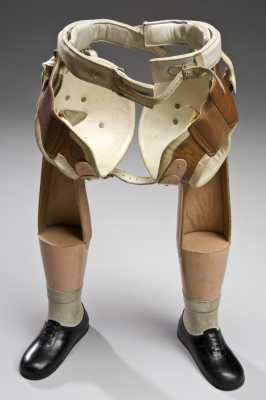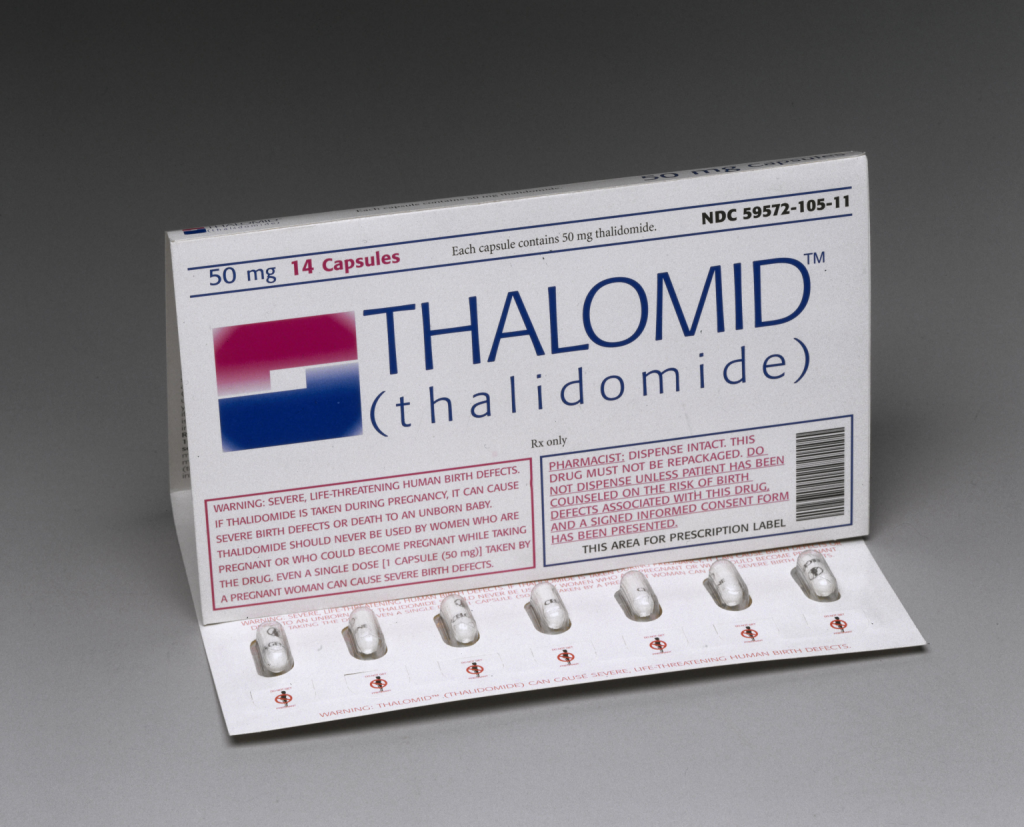Last weekend’s Call the Midwife marked a moment in television history. It was the first time that a major drama programme looked at the issue of thalidomide.
In the late 1950s and early 1960s, thalidomide appeared to be a new wonder drug – a sedative seemingly without any toxic effects.
Thalidomide was available in Britain from 1958 to 1962 for a wide range of conditions, from colds and flu and as a sedative. Britain was just one of 46 countries where thalidomide was available. The drug was marketed as completely safe for pregnant women and for children and could be found in hundreds of products world-wide, under a number of different names.

However, the drug actually caused thousands of serious birth defects across the world, four hundred of those occurring in the United Kingdom.
The tragic link between the drug and its impacts on foetal development took years to uncover, in part because the effect was only felt when mothers-to-be took the drug during a very specific period of their pregnancy (20-37 days after conception).
As a result of thalidomide, changes were made to the way drugs were marketed, tested and approved both in Britain and across the world.
Long-time readers of this blog will know that Call the Midwife has always had a great resonance with the Science Museum’s medicine collections: from foetal stethoscopes to the appearance of our mobile x-ray van in an episode about tuberculosis screening.
Within the Museum’s collections, we hold a collection of prosthetics made for children affected by thalidomide (such as this pair of artificial legs) and the drug itself.
Many children affected by thalidomide rejected the use of prosthetics, as they were heavy, cumbersome, and in many cases, just not needed.
The powerful story of thalidomide will feature in the Science Museum’s new medicine galleries, due to open in 2019.
Visitors to the new galleries will see displays on the drug itself, its impact on families and the pharmaceutical industry and its continued use today, mostly under strictly controlled conditions.
Thalidomide may only have been freely available for a short period of time, but its legacy lives on through people who are living with its effects, and in the safety checks now in place when new medicines are developed.

3 comments on “Thalidomide’s legacy”
Comments are closed.
Fascinating read, was it also offered to counteract morning sickness? I thought that Call the midwife, for a lightweight Sunday evening show, handled it really well with a good deal of sensitivity.
Sadly one legacy is that the manufacturer, Grunenthal, refuses to apologise to or compensate all they disabled. The company makes profits in the UK with its painkillers being prescribed to the very people they disabled with chronic pain and who they refuse to support. Surely there is a moral obligation for them to support those they disabled, rather than make money from them?
I work within drug safety and have been aware of the effect that this has had on the industry. With what we know about the issues now, it is nice to see a reminder of how this might have played out at the time.